|
What Is A Watershed?
Information taken from EPA's Coastal Watershed Factsheets: http://www.epa.gov/owow/oceans/factsheets/fact1.html
A watershed is a geographic area in which all sources of water, including lakes, rivers, estuaries, wetlands, and streams, as well as ground water, drain to a common surface water body. In our case, this common body of water is Manhasset Bay.
Parts of the Coastal Watershed
The coastal watershed has several parts. It starts up at the beginning headwaters of the streams and rivers that ultimately drain down to the coastal areas. Headwaters often include wetlands, and wetlands often are 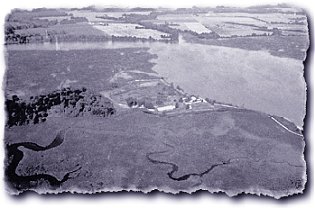 adjacent to the flowing waters of rivers or streams. As the streams and rivers flow to coastal waters, they are influenced by many land and water uses. They pass through upland areas used for a variety of purposes such as farming, housing, businesses, recreation, and conservation. Upon reaching the coastal areas, the rivers empty into estuaries, which provide a unique habitat for a diverse group of organisms. Among other habitat functions, rivers and estuaries provide breeding and feeding grounds for a variety of aquatic and terrestrial animals. Nearshore waters, the areas directly offshore from the beach, are part of the coastal watershed because they are influenced by the activities going on along the shoreline and by pollutants coming from the land. Farther offshore are coral reefs (in tropical areas) and other offshore habitats that are part of the coastal watershed as well. adjacent to the flowing waters of rivers or streams. As the streams and rivers flow to coastal waters, they are influenced by many land and water uses. They pass through upland areas used for a variety of purposes such as farming, housing, businesses, recreation, and conservation. Upon reaching the coastal areas, the rivers empty into estuaries, which provide a unique habitat for a diverse group of organisms. Among other habitat functions, rivers and estuaries provide breeding and feeding grounds for a variety of aquatic and terrestrial animals. Nearshore waters, the areas directly offshore from the beach, are part of the coastal watershed because they are influenced by the activities going on along the shoreline and by pollutants coming from the land. Farther offshore are coral reefs (in tropical areas) and other offshore habitats that are part of the coastal watershed as well.
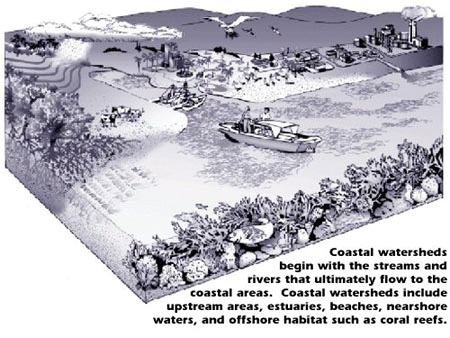
How Does the Watershed Influence Marine Resources?
 
Since a watershed is made up of several components that are all part of the "big watershed picture," it is important to remember that what happens on the land can affect the water. For example, if a river or stream flows through an agricultural area, it can pick up fertilizer, manure, and pesticides from farming operations that run off the land after a rainstorm. As it passes urbanized and suburbanized areas, it might gather fertilizers that wash off lawns, untreated sewage from failing septic tanks, wastewater discharges from industrial facilities, sediment from construction sites, and runoff from impervious surfaces like parking lots. Upon reaching the coast, the stream or river can be affected by commercial and recreational boating, discharges from industrial and municipal facilities, and recreational activities on beaches. All of these areas-- agricultural, uburban, urban, and coastal-- can have an impact on marine resources.
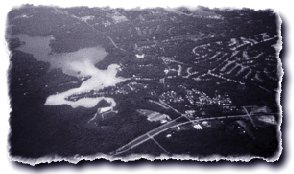 Some Pollution Impacts on the Coastal Watershed Some Pollution Impacts on the Coastal Watershed

Soil (loose dirt) from construction sites, farms, and areas where dirt is exposed can wash off into streams and rivers when it rains and flow to lakes, estuaries, and oceans. The result can be muddy waters that smother organisms living on the bottom, decrease the amount of light reaching the sea grass beds, and clog fish gills. Some kinds of pollutants can bind to sediment and flow with it to coastal waters.
 Excess nutrients can also wash off the land when it rains and end up in coastal waters. Sources of excess nutrients include lawn fertilizers, pet and farm animal waste, decaying plant material, failing septic tanks, atmospheric deposition, and inefficient sewage treatment plants. The loss of wetlands in many watersheds has reduced the ability of nature to process these nutrients before they enter rivers, streams, and ultimately estuaries. These nutrients can Excess nutrients can also wash off the land when it rains and end up in coastal waters. Sources of excess nutrients include lawn fertilizers, pet and farm animal waste, decaying plant material, failing septic tanks, atmospheric deposition, and inefficient sewage treatment plants. The loss of wetlands in many watersheds has reduced the ability of nature to process these nutrients before they enter rivers, streams, and ultimately estuaries. These nutrients can 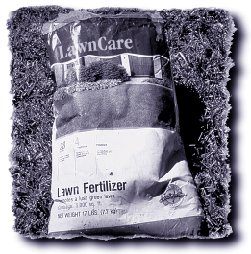 cause an excessive amount of algae (microscopic plants) to grow in the water, blocking the light reaching sea grass. When the algae die off, the decaying process uses up the oxygen in the water, leaving little, if any, for fish and other aquatic organisms. In addition, some of these algae and related organisms (including Pfiesteria piscicida) release toxins that can kill fish or shellfish, and can be harmful, or even fatal, to humans. cause an excessive amount of algae (microscopic plants) to grow in the water, blocking the light reaching sea grass. When the algae die off, the decaying process uses up the oxygen in the water, leaving little, if any, for fish and other aquatic organisms. In addition, some of these algae and related organisms (including Pfiesteria piscicida) release toxins that can kill fish or shellfish, and can be harmful, or even fatal, to humans.
 Toxic substances, such as pesticides from lawns, gardens, and farms, and lead, oils, and greases deposited on roads from cars and trucks, can all run off the land with rainfall and snowmelt. Industrial plants and municipal wastewater treatment plants can also contribute to the amount of toxic substances entering streams and rivers and ultimately lakes, estuaries, and coastal waters. Fish kills and loss of the recreational uses of an area can occur. Toxic substances, such as pesticides from lawns, gardens, and farms, and lead, oils, and greases deposited on roads from cars and trucks, can all run off the land with rainfall and snowmelt. Industrial plants and municipal wastewater treatment plants can also contribute to the amount of toxic substances entering streams and rivers and ultimately lakes, estuaries, and coastal waters. Fish kills and loss of the recreational uses of an area can occur.
 Pathogens are microscopic organisms like bacteria and viruses. They come from untreated or poorly treated sewage, pet and farm animal waste, and improperly handled medical waste. Pathogens in the water in unsafe amounts result in beach closures, shellfish bed closures, fish kills, and human health problems. Pathogens are microscopic organisms like bacteria and viruses. They come from untreated or poorly treated sewage, pet and farm animal waste, and improperly handled medical waste. Pathogens in the water in unsafe amounts result in beach closures, shellfish bed closures, fish kills, and human health problems.
Resource Impacts
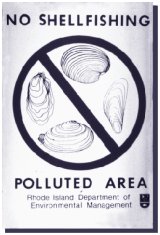
Activities in the watershed can adversely affect a variety of resources. (Specific impacts on each of these resources are discussed in the referenced factsheets.)
Beaches-- Overloading of pollutants such as sewage and debris can result in beach closings. (EPA 842-F-98-010)
Bays and estuaries-- Pollutants in and structural alterations to bays and estuaries can lead to loss of breeding and feeding grounds of fish, other aquatic animals, and birds, as well as loss of recreational areas. (EPA 842-F-98-009)
Nearshore waters-- Along with bays and estuaries, nearshore waters are collection places for pollutants that flow from the watershed. (EPA 842-F-98-007)
Coral reefs and other offshore areas-- Marine debris and pollutants such as nutrients and pesticides can flow offshore and affect coral reefs and other offshore habitats. (EPA 842-F-98-008)
It is important to think of the watershed as a whole system that is tied together. What happens in one part of the watershed can affect another part, sometimes hundreds of miles away
|